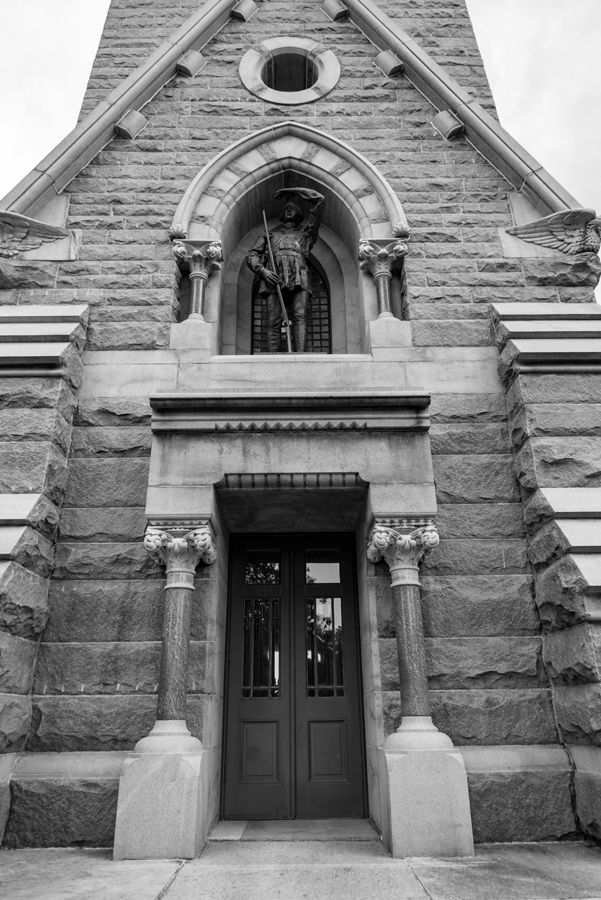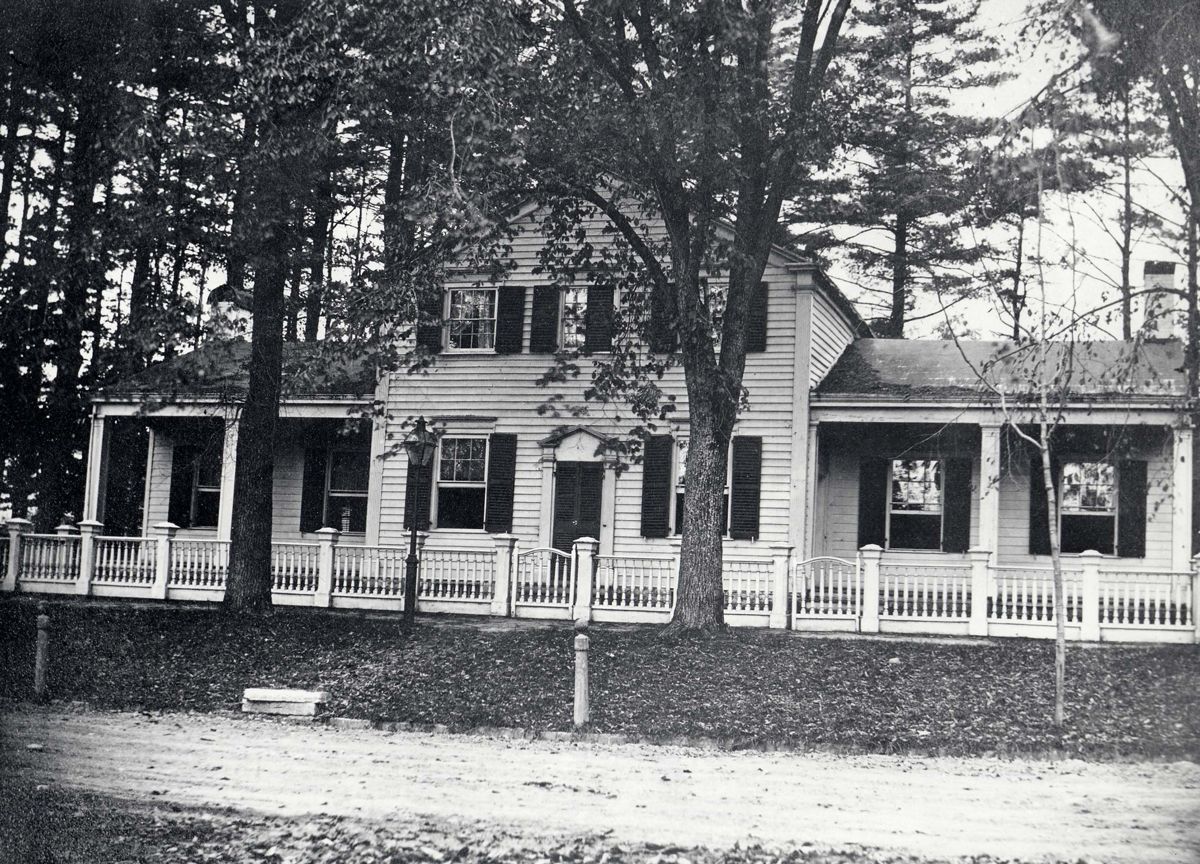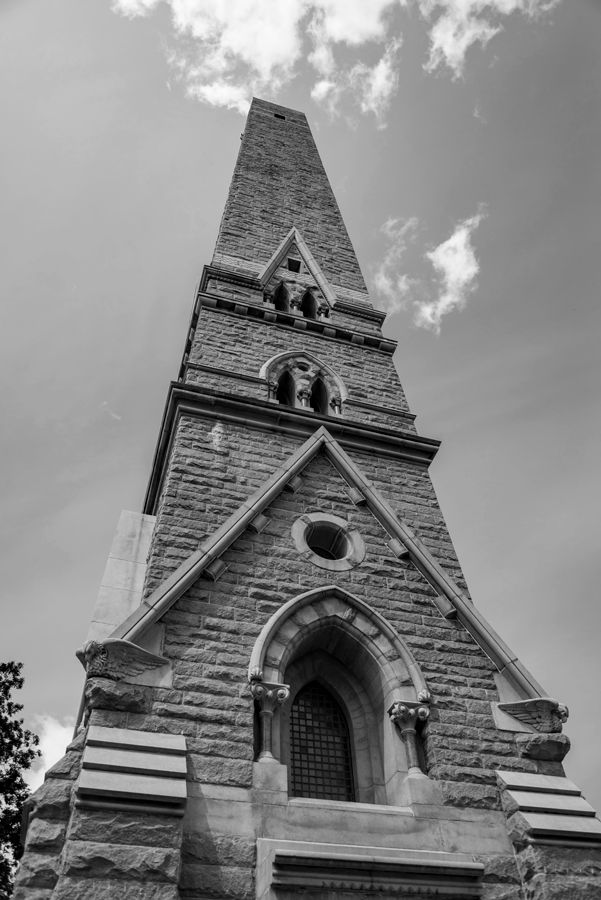

The Walworth Family:
Pine Grove and Beyond
{From the 2024 Spring magazine}
Written By Charlie Kuenzel, Saratoga Springs History Museum Director of Education and Programs
Image Courtesy of the George S. Bolster Collection

Pine Grove, Home of the Walworth Family
Saratoga Springs’ history has a long list of important and influential people who resided here and helped to shape the city’s future. The name Walworth was one that affected our city in many different ways.
Judge Reuben Hyde Walworth was a very prominent New York chancery judge who came to Saratoga Springs in 1823. Upon arrival to the village, he bought a house that had been built in 1815 by Henry Walton. Walton was a large landowner and early leader in the village. In the early 1800s the area we think of today as the business district of Saratoga Springs was unsettled and a primitive pine forest. Gideon and Doanda Putnam owned a sawmill and were harvesting those trees to be turned into dimensional lumber for buildings in this new village. Therefore, the house that was purchased by Walworth from Walton had been named Pine Grove because of the original trees surrounding the house. Pine Grove was razed in the 1950s and was located on Broadway on the site of the present-day Stewarts that is across the street from the City Center. A sign marks that location, of this very important location in Saratoga history.
Judge Walworth’s prominent position made Pine Grove a regularly visited destination by many very important figures in America of the day. In 1823 not only was Walworth a judge but had just finished a term as a United States Congressman. Reuben Hyde Walworth was a very connected professional and therefore a very prominent citizen of Saratoga Springs. Judge Walworth is reported to have been visited by such prominent people as Marquis de Lafayette, Joseph Bonaparte, Madame Eliza Jumel, James Fenimore Cooper, Daniel Webster, Washington Irving and American Presidents, Buchanan, Filmore, and Van Buren.
Reuben Hyde Walworth was born in 1788 in Connecticut. In 1809 Walworth was admitted to the New York Bar and in 1810 he moved to Plattsburgh, New York. He married Maria Averill and was a prominent judge in the North Country before being elected to the Congress of the United States. When he moved to Saratoga Springs in 1823, he started as a chancery judge, that lasted for more than thirty years. Walworth was elevated to the position of Chancellor of the State of New York, the highest-ranking judge from 1828 to 1847. It was this judicial position that brought very prominent people to Saratoga and to the courtroom of Reuben Hyde Walworth. In 1848 Walworth ran unsuccessfully for Governor of New York State.
In the year 1848 Reuben’s wife Maria died, leaving him with six children. In about the year 1850 Reuben met Sarah Ellen Hardin of Kentucky. In 1851 after a brief courtship, Reuben married Sarah whose husband John Hardin had died while serving in the Mexican American War at the battle of Buena Vista. Sarah had three children from her marriage to John Hardin which made for a new family with Reuben that would have many children. Sarah moved her family to Saratoga and this large, combined family resided together at Pine Grove. Reuben died at age 79 in Saratoga in the year 1867.
As things sometimes happen, older son Mansfield Walworth was infatuated with his new stepsister Ellen Hardin and the two married in 1852. The marriage of Mansfield and Ellen produced eight children but also became a rocky marriage, that found Mansfield being abusive both physically and emotionally toward Ellen. Over the years this spousal abuse resulted in many trial separations. During these periods of separation, Mansfield wrote many letters to Ellen and threatened her with bodily harm if they didn’t end the separation. These letters were received over many years as the children grew into adulthood and son Frank became angry of the way his father continued to treat his mother, and as a young man he finally traveled to New York City to visit his father. Upon his arrival in New York City, he shot and killed him in an action to protect his mother from further harm. Frank was quickly arrested and tried for the murder of his father. Found guilty, Frank was sentenced to prison.

Ellen was devastated by the court decision and began to study law, in an effort to get her son released from prison. Through her and other people’s actions Frank was eventually released from prison but was remanded to a facility for the insane. Years later Frank was released from the facility and returned to Saratoga before his death. He had protected his mother from the abuse of his father and did what the courts could not do to protect Ellen from spousal abuse.
Ellen continued to grow as a very impressive strong woman and accomplished many wonderful things in her lifetime. As the year 1877 approached, the Centennial year of the battle of Saratoga, plans were made to build the Saratoga Battle Monument obelisk that is seen today near Schuylerville. This tall memorial needed planning and fund raising to keep it on track for completion. Records show that much of the needed planning and work came from the efforts of Ellen Hardin Walworth. Ellen also -with the help of others- established the Women’s National War Relief Association during the Spanish- American War. Ellen continued to impress. By working with three other women she formed the DAR, the Daughters of the American Revolution and served as the first Secretary General for that organization.
Ellen was a good mother and an excellent role model for her children, many who served the community and nation during their lives. Daughter Reubena is one shining example of this service and dedication. As the Spanish-American War was approaching Reubena could see that a family tradition was about to be broken. The tradition was that since the beginning of the country a member of the Walworth family went off to fight in every war and represented the family. Not wanting to break the tradition, Reubena presented herself to the local Army recruiter for service. She was refused to be allowed to enlist as a soldier but was told she could serve as a nurse. After receiving nursing instruction, she entered the Army and served gallantly as an Army nurse at Camp Wikoff at Montauk Long Island, an Army hospital. Many soldiers in the hospital were not healing from battle wounds but rather from tropical diseases contracted while stationed in a tropical environment. Reubena’s dedication and caring regularly put her in an exposed position to possibly contract one of these tropical diseases. Eventually she contracted typhoid fever and died at age 31 years. She was honored as a true hero and was buried in Greenridge Cemetery in Saratoga Springs. On her grave marker is inscribed, “She served her flag, not as a man. But better still, as only a woman can.”
The Walworth family had so many members and did so many things to support the community, and the nation. It’s very impressive to think that this great family of Saratoga was but one of many families that helped to define our great city. When Pine Gove was razed in the 1950s the contents of the Pine Grove house was donated to the Saratoga Springs History Museum and housed on the third floor.
I invite you to visit the museum this spring to see new exhibits on the second and third floor that help to tell the story of the Walworth family and the story of Saratoga Springs. The museum is in the Canfield Casino in historic Congress Park and is a must see for those that love the history of our grand city. Make sure to put a visit to the museum on the list for the summer months.
NOTE TO READERS: After 12 years of being a contributor for Simply Saratoga, this will be my last article. Changes in my life will prevent me from writing future articles for this wonderful publication.This opportunity has been unimaginable, and you the reader were so kind to share with me your thoughts on my many articles. Thank you all, for your years of support and as always, “Go Saratoga”!!